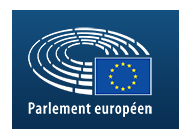Document type Response from the European Commission to question E-002695/23
Authors: question: Auélia Beigneux (ID). Answer: Mrs Kyriakides on behalf of the European Commission
Question: Today, the vast majority of pigs reared on our continent can be found on intensive livestock farms. Faced with boredom, overcrowding and isolation, these animals eventually develop behavioural disorders that cause them to bite each other's tails.
To address this issue, some breeders cut their animals’ tails off, and this without any anaesthesia – a practice prohibited by the European Union. This stress-inducing and seriously painful mutilation triggers changes to the pig’s behaviour: a tendency towards isolation, an elevated heartrate, a reduced appetite and an increased level of aggression can all be observed. While tail docking is regulated by the 1991 directive laying down minimum standards for the protection of pigs, the Commission has recently pointed to shortcomings in the rearing conditions in the pig farming sector.
In the light of the above:
1. How does the Commission actually intend to enforce this directive?
2. Has it put in place measures to help farmers bring their farms in line with the directive?
3. Can the Commission say whether livestock farmers exporting pig meat into Europe are subject to this directive?
Answer: The Commission is monitoring the progress of compliance with the rules on pig tail docking in Member States. The monitoring is performed through the analysis of national action plans for the prevention of routine tail docking as well as ensuring the follow-up of relevant audit recommendations generated by the relevant services of the Commission. To facilitate the shift to an EU pig production without the need to tail dock routinely, the Commission published in 2016 a dedicated Recommendation, as well as the accompanying Staff Working Document providing the most relevant guidelines to be followed. Educational materials aiming at reducing the need for tail docking have been developed in 2017 and are available at the dedicated Commission’s website. A European Union Reference Centre for the welfare of pigs has been designated in 2018 and produced a series of technical and scientific materials to support the competent authorities. These materials are publicly available, usable, and useful to farmers as well, particularly the factsheets summarising indicators relevant to tail biting and tail docking, which are available in five EU languages. In addition, the Commission has worked with Member States to ensure that the Common Agricultural Policy (CAP) Strategic Plans include measures to support farmers address animal welfare concerns, including in pig farming. Article 9 of Council Directive 2008/120/EC requires animals entering the EU from third countries to be certified as having received treatment at least equivalent to that provided for in this directive. No similar requirement exists in this directive for pig meat products entering the EU.






